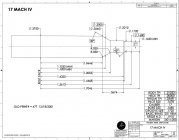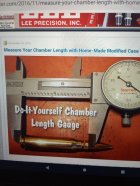AlNyhus
Silver $$ Contributor
My first post on this thread (post #50) reads:I've been thinking about your comment.
The guy that sent me the rifle ended up sending some fired brass to me, I just got it today. And it's older Remington, probably shot 20 years ago, so it's oxidized. That made me notice something. Here's a couple photos of the rim of the necks on that old RP brass, there's dents and shiny areas.
View attachment 1680936
View attachment 1680937
And here's the tops of some brass I made, and shot today, same scarring, dents, shiny spots
View attachment 1680938
So, I'm wondering if the neck cut in the chamber has some material that is hitting the rims of the necks, leaving these marks? And, if so, I would think that would impact the accuracy.
Might trimming the brass, to bring clearance to these obstructions, be the right move? Or what?
"Before you grind, Dremel, file, sand, chisel or do anything...check your neck clearance and chamber length."
The flat spot on the mouth of the case necks can happen when as the bolt is pulled back, the pressure from the ejector slaps the case neck first against the side of the chamber and then against the side of the receiver.
The shiny spots on the end of the case moutn may or may not be an indicator of the necks bottoming out against the end of the neck area of the chamber.
You have to check this stuff......
Last edited:













